3–5 minute read
The two most common soil problems are compaction and poor drainage.
compaction
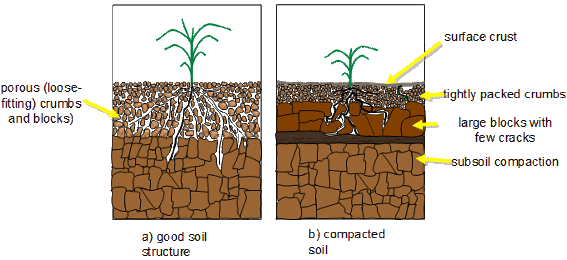 Organic Soil Solutions Soil compaction
Organic Soil Solutions Soil compaction
Clay soils, even when amended, are especially susceptible to compaction. According to the Colorado Master Gardeners, “Low soil oxygen levels caused by soil compaction are the primary factor limiting plant growth in landscape soils.” Because compaction is difficult to correct, it is important to employ preventive strategies. The Colorado Master Gardeners’ excellent article about soil compaction includes the following techniques to minimize compaction and a discussion of compaction issues around trees.
- Add 6–8″ of organic matter to the soil where practical. Learn how organic matter protects from compaction
- Manage traffic flow so that beds and tree protection zones (the critical root area, a diameter ~ 40% larger than the tree dripline) are not walked on.
- Use mulches to reduce compaction from foot traffic and precipitation/irrigation and to encourage beneficial soil organisms.
- Where amending the soil is impractical, such as in lawns and around trees, aerate at 2″ intervals.
- Avoid excessive cultivation, which destroys soil structure and kills beneficial organisms like earthworms.
- Avoid cultivating overly wet or dry soils.
Drainage
Much of this section is condensed and adapted from the excellent Colorado Master Gardener GardenNotes Managing Soil Tilth: Texture, Structure, and Pore Space and Soil Drainage.
Poor site drainage explains many planting failures. Waterlogged soil excludes the oxygen that plant roots need, inhibits soil organisms that promote nutrient accessibility and improve soil structure, and fosters fungal disease and root rot.
Drainage is determined mainly by the number of large-diameter pores in the soil
 Colorado Master Gardener GardenNotes #213 Managing Soil Tilth: Texture, Structure, and Pore Space
Colorado Master Gardener GardenNotes #213 Managing Soil Tilth: Texture, Structure, and Pore Space
Assessing drainage
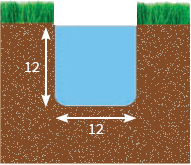
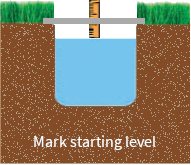
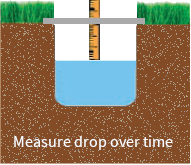
- Dig a 12 X 12-inch hole with vertical sides.
- Gently fill the hole with water. To keep the soil from sealing, you can add an inch of coarse gravel to the bottom of the hole first to protect it.
- Let the water drain completely.
- Gently refill the hole with water to about 1” below the top and measure the drop in water level over time: Lay a rod across the top of the hole and use a ruler to measure from the top of the water to the bottom of the rod every hour for at least 4 hours.
If the average drop per hour is less than 1.5 inches, drainage is too slow for soil health. If poor drainage is not due to compacted subsoil, it can be improved by amending the soil. Otherwise, or if you don’t enjoy amending, create a berm or raised bed for your planting area instead.
Correcting poor drainage
Impervious subsoil underlain with permeable soil
- If less than 2 feet thick, double-dig when the soil is dry, irrigate to settle, let the soil dry again, then grade.
- If greater than 2 feet thick, bore 4–6″ diameter holes through the layer at 6 feet intervals, filling with coarse sand or fine gravel.
- Alternatively, create a raised bed, berm or mound.
Impervious subsoil
- Create a raised bed, berm or mound. In theory, subsurface drains are an option, but in practice, subsurface drains will be helpful only if the number of large-diameter soil pores can be increased sufficiently to allow water to flow down to the drains.
- Select shallow-rooted, water-tolerant plants.
Abrupt change in soil porosity (distinct soil layers)
Water, air, and roots cannot easily move between areas with sharp differences in pore size. If porosity differences between amended/imported and native soil are too distinct, water will accumulate in a layer about 6″ thick above the interface, creating an overly wet, poorly oxygenated environment known as a perched water table:
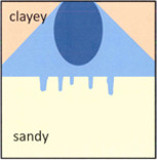
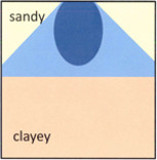
A perched water table also prevents oxygen from reaching the soil below, which is then unable to support healthy plant roots. The result is shallow-rooted plants that are more sensitive to hot, windy conditions and drought. This is often seen when amended soil is used for a raised bed or applied as a top dressing. To improve water percolation through the interface, break up the unamended soil at the bottom of the planting area. Cultivate to mix the amended soil with the native soil, creating an interface that is no more than 50% amended soil by volume.
Poor surface grade
Create a 1–3% slope to ensure good surface drainage and fill any low spots so that water does not pool.
Soil Compaction
Earthworms
The Living Soil
